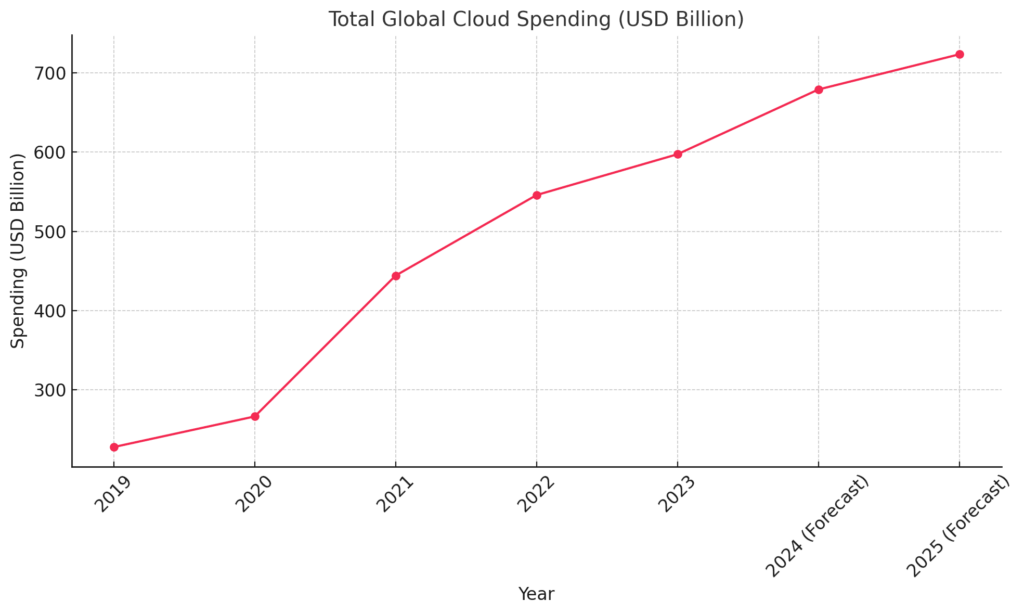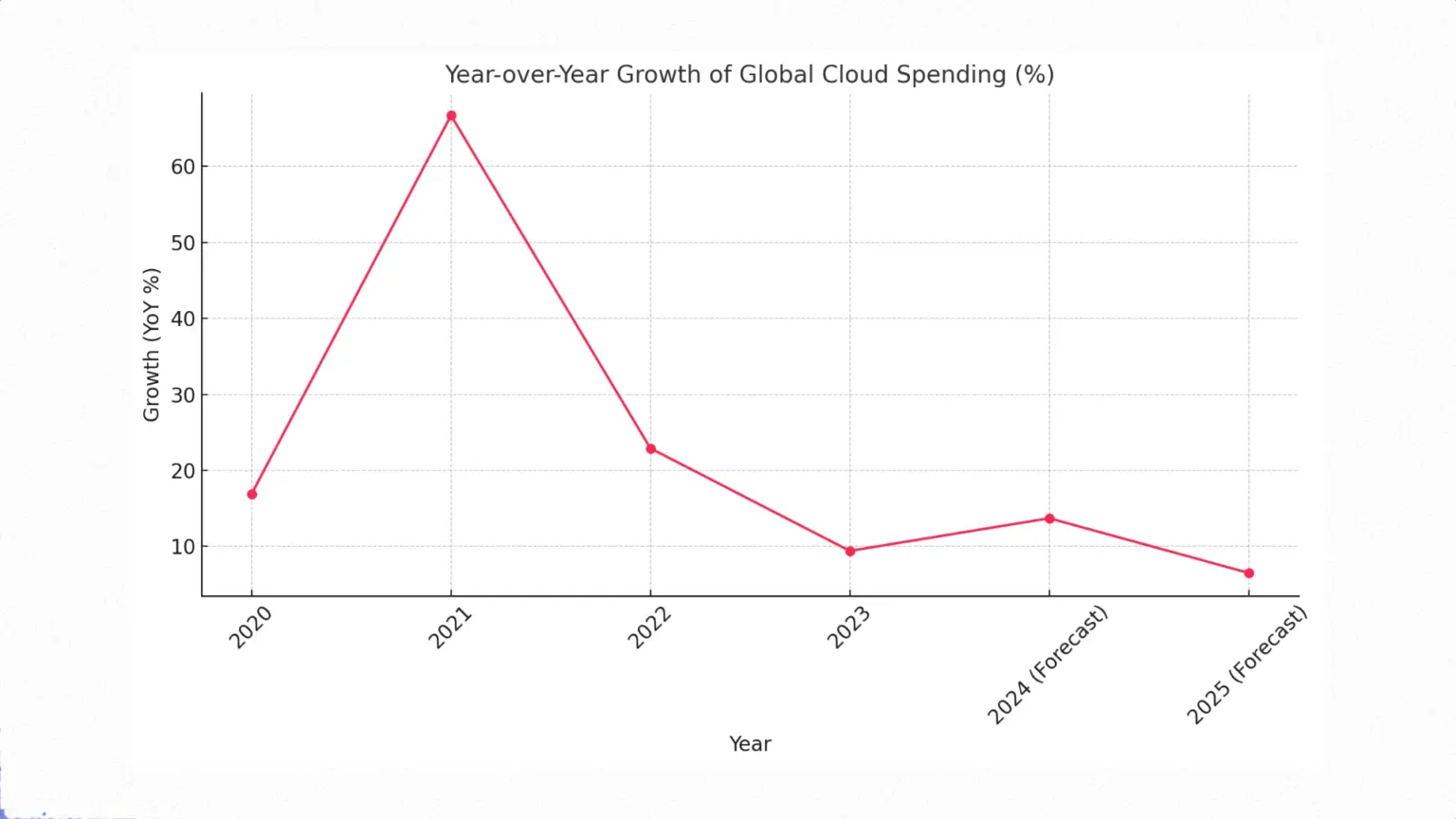After a decade of almost unconditional dominance of the ‘cloud first’ paradigm, the cloud market is entering a new, much more mature phase. Initial enthusiasm, driven by the promise of scalability and flexibility, is giving way to hard cost analysis and real business value. The industry is increasingly talking about ‘cloud fatigue’ – a phenomenon that signals not the end of the cloud era, but the end of its uncritical adoption.
The paradox of growth and discontent
Despite growing scepticism, the cloud market is experiencing an unprecedented boom. Global spending on public cloud services is expected to reach US$723.4 billion in 2025, an increase of 21.5% on the previous year. However, this impressive growth stands in stark contrast to widespread problems. According to Flexera ‘s ‘State of the Cloud 2025’ report , as many as 84% of organisations are struggling to manage their cloud spend, which is exceeded by an average of 17%, and estimated wastage remains at an alarming 27%.
The key to understanding this paradox is artificial intelligence. Investment in AI and machine learning (ML) in the cloud is literally exploding. Gartner predicts that AI will consume 50% of all cloud computing resources by 2029, compared to less than 10% today. Companies are spending more because they need to invest in innovation to stay competitive. At the same time, they are struggling with the increasing cost and complexity of the very platforms on which they are building their future.
The true price of the cloud and the birth of FinOps
“Cloud fatigue” comes from the realisation that its true cost goes well beyond the price of a virtual machine. Hidden charges, such as those for outbound data transfer from the cloud (egress), become a painful trap. Hyperscalers charge around $0.09 to $0.12 for every gigabyte of data sent to the internet, effectively discouraging switching providers or building hybrid architectures.
In response to this complexity, a new management discipline – FinOps – was born. It is an organisational culture and set of practices that brings together finance, technology and business to make informed decisions about cloud spending. The scale of adoption of this methodology is impressive: already 59% of companies have dedicated FinOps teams. FinOps is evolving from a simple cost control tool to a strategic analytics engine that helps decide which workload should run in which environment – public cloud, private cloud or on-premise.

Repatriation as strategic recalibration
As companies gain a better understanding of costs, there is growing interest in repatriation – moving applications and data from the public cloud back to their own data centres. While still a niche phenomenon (21% of workloads have been repatriated to date ), up to 86% of IT directors are planning to move at least some of their resources back to private environments.
A flagship example is 37signals (creators of Basecamp), which, after spending US$3.2m on public cloud services in 2022, has invested in hardware and estimates annual savings of US$1.3-2m. Similarly, Dropbox has saved US$75m over two years by building its own infrastructure. Repatriation is not evidence of the failure of the cloud, but of the maturity of companies, which are choosing more cost-effective models for stable and predictable workloads. The ‘cloud-first’ dogma is being replaced by a pragmatic ‘workload-first’ strategy.
New players challenge the giants
In response to the weaknesses of the hyperscaler model, a new wave of specialised providers is emerging in the market. They are not competing with the giants on their terms, but solving specific problems, e.g. Wasabi offers a simple and predictable pricing model for data storage, completely eliminating egress fees and API queries, making it ideal for backup and archiving. Akamai Connected Cloud, on the other hand, combines traditional data centres with a massively distributed edge network, placing computing power closer to users, which is crucial for latency-sensitive applications such as gaming and streaming.
These new players are ‘disaggregating’ the cloud, optimising one dimension of its value proposition – cost, security or performance – which has been compromised by the ‘all-for-all’ model used by hyper-scalers.
Entering the era of cloud maturity
“Cloud fatigue” is not a sign of crisis, but a healthy sign of market maturity. Companies are not turning away from the cloud, but are learning to use it in a more informed and strategic way. The future is not a binary choice between cloud and on-premise, but an intelligent hybrid that combines hyper-scale services for innovative AI projects, in-house infrastructure for stable workloads and specialised services from niche providers for specific tasks.
For IT leaders in Poland, this means building FinOps competencies, auditing the application portfolio for the optimal environment and strategically diversifying to avoid dependence on a single provider. In the new cloud phase, the goal is no longer to be in the cloud at all costs, but to optimise the return on investment for the entire organisation by consciously managing a diversified portfolio of infrastructure options.










